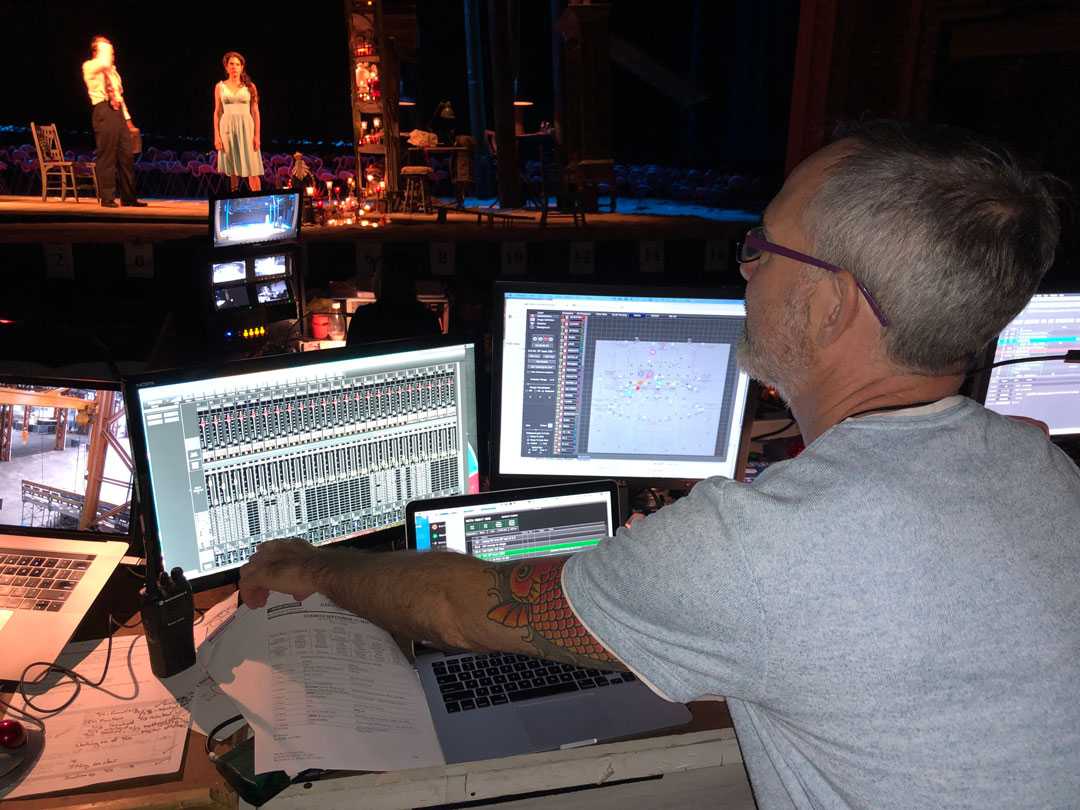TiMax creates natural sound for The Rose Tattoo
- Details

Ward says: “I knew I needed some kind of movement tracking for the actors. I’ve always wanted to use TiMax on one of my shows and based on prior work with Robin (Whittaker, director of TiMax developers Out Board) I felt this was the perfect solution.”
The audio creative team included Sun Hee Kil, also associate sound designer, working with sound designer and composer Fitz Patton. This same sound team won the 2019 Tony Award for Best Sound for a Play, for Choir Boy on Broadway.
The set design created a stage that was wide and deep surrounded by animated video scenography. In addition, the set included a hanamachi – Japanese for flower path: a bridge that extends out into a segment of the audience area which formed an important part of the staging and direction.
A primary role of TiMax was to accommodate this additional area of stage, naturally localising sound in real time without the need for complicated programming. With the aid of a speaker placed at the far end of the hanamachi deep in the audience, TiMax simply facilitated the morphing of localised vocals from the main stage speaker image to the hanamichi image, as the actors walked across the bridge. Both speaker images made use of almost all of the 80 loudspeakers in the system varying the level and delay to each loudspeaker in real time as the actors moved from one image to the next.
Ward confirms: “I now can’t imagine doing a play that requires movement like this without TiMax. I really like the fact that TiMax makes use of both level and delay matrixing to achieve natural sounding movement of sound. I also love the ‘Auto Calculate’ function that instantly calculates the delay time for each loudspeaker. This meant we were able to focus on things other than setting delay times during our very limited system tuning time.
“Using TiMax, we positioned the primarily Meyer sound system for localisation but were partly limited to hanging locations available and aesthetics that worked with the play as a whole. The resulting audio was extremely natural which is always my goal. I love it when people say, ‘I didn’t realise the actors were wearing mics’.”
Sound designer Fitz Patton adds: “Without TiMax, the sound would have been coming from fixed locations or very simple fades which would not have precisely followed the actor location.”
(Jim Evans)
















